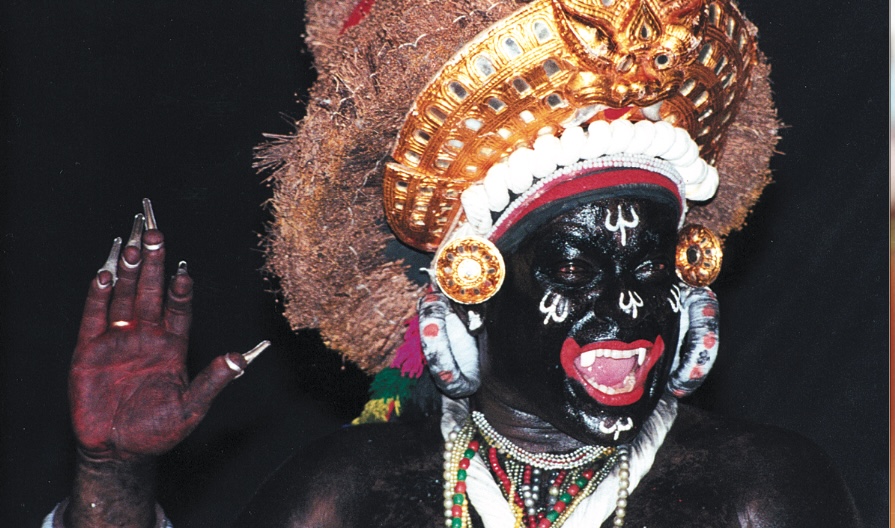An Englishman, goes the story, is walking his dog in a Kerala village when he encounters a Kutiyattam actor. The dog snarls at the actor, then starts to chase him. The actor reaches down for an imaginary stone and hurls it at the dog. The dog collapses, howling in pain. Disbelieving what he has just seen, the Englishman demands a demonstration. The actor assumes the role of Ravana lifting Mount Kailash. Hoisting the imaginary mountain high over his head, the mime suddenly hurls it at the Englishman, who faints dead away of fright. Those who have seen Kutiyattam dance can attest to the mesmerizing impact of the actors, as would the Englishman, had he survived. Their art is theorigin of Kerala’s better known, elaborate and colorful Kathakali.
It was in 1975 that G. Venu, then an accomplished Kathakali performer, first saw Ammanur Madhava Chakyar perform Kutiyattam. “Imagine the impact he had on me at the height of his power,” Venu told the Sunday Express. “He was full of vigor, magnificent. I had only one thought drumming in my brain. Here is everything I want, the goal of my life, this is the ultimate thing.”
Decades later, 85-year old Ammanur teaches at the research and training center, Natana Kairali, established in 1975 by Venu, age 57, and Venu’s wife, Nirmala. They have seven advanced students, including their daughter Kapila. At least one of them walked away from a promising business career for the dance. Venu’s work extends considerably beyond training students. The center’s team has rescued entire art forms from extinction, including Kerala’s various styles of puppetryÑshadow or tholpavakoothu, glove or pavakathakali and stringed or nool pavakoothu. He is supported in his efforts by Sangeet Natak Akademi, World Theatre Project of Sweden, Japan Foundation, Sanskriti Pravah, and by foreign fans who outnumber the locals at the annual Kutiyattam festival in Natanakairali. He’s taken the troupe on tours of Europe and Southeast Asia, and consults for UNESCO.
Nirmala Panicker, Venu’s wife, is a scholar and expert dancer of Mohiniyattam. She has researched and written several books, including Mudras in Kathakali, Production of a Play in Kutiyattam and Classical Dance Tradition in Nangiars. She and Venu have recorded in dance notation and on video the elaborate hand gestures and eye expressions of the dance forms, and researched their origins and interpretations in Vedic and Agamic literature. More recently, they’ve branched out to studies of comparative acting techniques, such as exploring the hand gestures of Chinese dance.
Venu has appealed for funds to continue their video documentation of dance, as well as to microfilm and digitize the entire collection of palm-leaf manuscripts of Guru Ammannur’s family.
G. Venu, Director, Natana Kairali, Ammannur Chakyar Madhom, Irinjalakuda, 680121, Trichur District, Kerala, India
e-mail:venuji@satyam.net.in
